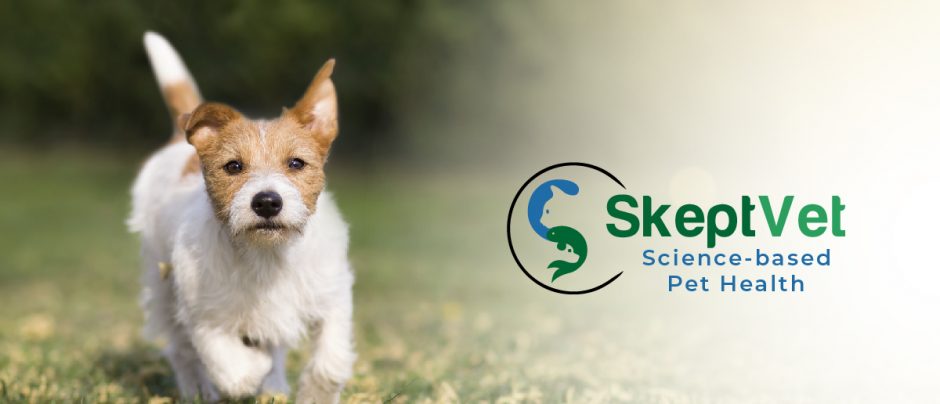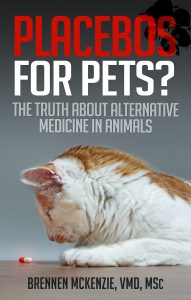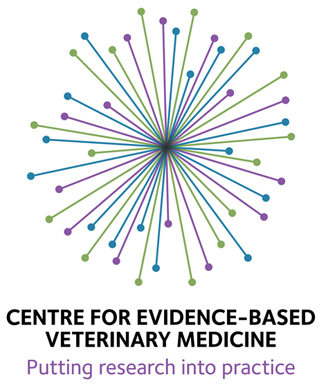There is widespread agreement among veterinary behaviorists, and veterinarians in general, that one consequence of the improved longevity of our patients has been an increase in clinical behavior problems associated with brain aging. Changes in sleep/wake cycles, activity level, housetraining behavior, recognition of familiar humans and other animals, and cognitive abilities are often seen in older pets, and these can severely affect the pets’ quality of life and the relationship between pet and owner. No standardized diagnostic test for these age-related changes exists, and each pet may experience different specific changes in behavior and ability. However, there is enough similarity in the types of changes seen in older pets that it is reasonable to discuss and address them as a syndrome until research allows us to identify more specific categories of age-related dysfunction and to elucidate the specific pathophysiology of each.
Likewise, there are a number of anatomical changes seen in dog and cat brains with age and associated with clinical symptoms or functional deficits. These include reduction in brain mass, cell and axonal degeneration and changes in the relative number of different cell types in the brain, and accumulation of beta amyloid. In dogs, these changes show some striking similarities with those seen in people with Alzheimer’s and other age-associated cognitive disorders. There are, however, significant differences as well, such as the absence in dogs of the characteristic neurofibrillary tangles seen in humans afflicted with Alzheimer’s disease. Therefore, though the similarities may justify tentatively viewing age-associated cognitive and behavior changes in dogs and humans as sufficiently alike to suggest that research findings in one species may have relevance to the other, we must be careful not to simply assume they are the same disorder with the same pathogenesis or the same response to pharmacological manipulation.
There are no universally or highly effective therapies for age-related cognitive and behavioral dysfunction. Some drugs, such as selegilene, have shown limited ability to improve clinical symptoms, but it is a disorder for which veterinary medicine has little to offer in the way of amelioration. Much more research must be done to understand the causes of the clinical problem and how these may be addressed.
As always, when there is a poorly understood problem with no ready medical solution, potential therapies abound and the standards of evidence required to justify their marketing and use are generally low. A number of nutraceutical products, vitamins or other dietary supplements used with the intent of achieving a beneficial pharmacological effect, are marketed for age-associated behavioral problems. Most of these are supported by reasonable theoretical rationales, suggestive in vitro research, some promising laboratory animal studies, and limited clinical research with few subjects and generally poor methodological quality.
As with probiotics, these remedies fall in an intermediate category between CAM and scientific medicine. There is reason to believe they may eventually prove useful, but the available data is not currently adequate to demonstrate this, and it is certainly not adequate to justify producing and selling such products to the general public. But manufacturers of neutraceuticals consider the time between the proposal of a hypothesis that a supplement might be beneficial and the accumulation of sufficient data to decide the truth as a golden time for marketing. As a recent article from the Los Angeles Times news service put it regarding one of these compounds:
For the purveyors of vitamins, minerals and herbal remedies, that is a five- to seven-year opportunity not to be missed. Consumers’ dreams of forestalling the ravages of age have been engaged, and they will buy and swallow anything that gleams with the luster of science. While they wait for science to flesh out resveratrol’s promise, consumers’ demands for the stuff can be built, tapped and satisfied with products that offer plenty of promise but tread lightly around the preliminary state of the scientific evidence.
“There’s a watershed time for a good nutraceutical,” says Dr. Joseph Maroon, a University of Pittsburgh neurosurgeon, author of a book titled “The Longevity Factor” and co-founder of a company, Xenomis, which rolled out a line of resveratrol-based supplements last May.
Resveratrol, in short, stands at the juncture of hope, profit and scientific promise — a social phenomenon galloping ahead of research that is undeniably intriguing but very incomplete.
Most of the products marketed for cognitive and behavior problems in older pets are combinations of multiple substances, which makes any rigorous scientific evaluation of them difficult. It is also the case that many of the studies available have been sponsored or conducted by companies marketing the product being tested, and while this does not invalidate the results, it is well-documented that such studies are more likely to be positive than independently conducted research.
Hill’s Pet Nutrition has created a veterinary diet fortified with Vitamins C and E, L-carnitine, omega-3 fatty acids, and lots of fruit and vegetable ingredients. The company has published results of several studies which support the contention that the diet has some protective benefits in terms of cognitive decline and age-associated behavior problems. It is impossible to identify which ingredients, singly or in combination, might account for this effect, but the evidence is good that there is some clinically significant benefit. As always, replication by independent investigators would strengthen the case, and further research to identify which components of the diet are of relevance would be useful.
Other products, such as CEVA Animal Health’s Senilife and VetPlus’ Aktivait, contain multiple ingredients each proposed to prevent or treat age-related cognitive dysfunction via plausible mechanisms based on in vitro or laboratory animal studies. Again, which if any of these ingredients might actually be beneficial is impossible to determine from clinical studies using the combination product. And so far the clinical research evidence is weak, consisting mostly of small, inadequately controlled trials often sponsored by the manufacturer. I will try to discuss each ingredient independently and then review the available literature on some combination products.
Phosphatidylserine-
Phosphatidylserine (PS) is a phospholipid that occurs in cell membranes. It is hypothesized, based on laboratory studies, to facilitate normal function of nerve cell membranes and influence levels of various neurotransmitters. A 2003 FDA report reviewed the clinical literature in humans and concluded that the evidence did not support assertions that this compound has preventative or treatment benefit for cognitive dysfunction and dementia in people. The agency did approve a highly qualified claim for the product:
Dementia claim and disclaimer:
“Consumption of phosphatidylserine may reduce the risk of dementia in the elderly.
Very limited and preliminary scientific research suggests that phosphatidylserine may reduce the risk of dementia in the elderly. FDA concludes that there is little scientific evidence supporting this claim.”
Cognitive dysfunction claim and disclaimer:
“Consumption of phosphatidylserine may reduce the risk of cognitive dysfunction in the elderly.
Very limited and preliminary scientific research suggests that phosphatidylserine may reduce the risk of cognitive dysfunction in the elderly. FDA concludes that there is little scientific evidence supporting this claim.”
One important caveat to the data the FDA analyzed is that most research has been done on PS derived from bovine brain tissue. Due to the risks of acquiring bovine spongiform encephalopathy (BSE or “Mad Cow Disease”) from this source, the FDA prohibited its use, and the proposed commercial products contain PS derived from soybeans. The plant derivative differs structurally from bovine-derived PS, so there is some question about whether data regarding one is applicable to the other. I was not able to identify the source of the PS in the various veterinary products and research trials.
I was also not able to find any veterinary clinical trials for cognitive dysfunction examining PS alone. It is included in a couple of combination products, including Senilife and Aktivait. As discussed below, the clinical research evidence for these products is weak. No evidence regarding the safety of the substance was found, apart from the theoretical concerns about BSE discussed in the FDA report.
Ginkgo Biloba-
This is a very popular herbal product which is purported to have a wide range of beneficial effects on cognition, memory, depression, anxiety, tinnitus, and headache. It has vasodilatory effects and acts as a scavenger of oxygen free radicals in vitro and in laboratory animal studies. The clinical trial evidence in humans does not support a beneficial effect for cognitive impairment or dementia, as summarized in a Cochrane review below.
Many of the early trials used unsatisfactory methods, were small, and publication bias cannot be excluded. Overall, evidence that Ginkgo has predictable and clinically significant benefit for people with dementia or cognitive impairment is inconsistent and unreliable. Of the four most recent trials to report results, three found no difference between Ginkgo biloba and placebo, and one reported very large treatment effects in favour of Ginkgo biloba
The review also concluded that there were no significant safety concerns for it’s use. The NCCAM summary of this product indicates no benefit seen even in a large NCCAM sponsored study of Alzheimer’s patients, and lists a number of possible toxic effects.
Again, I have found no veterinary clinical trials looking at Ginkgo biloba alone as a preventative or treatment for age-associated cognitive and behavior problems. It is included in Senilife, which I discuss below has limited weak evidence to support a beneficial effect.
Resveratrol-
Resveratrol is a chemical extracted from grapes that has been touted as a general anti-aging panacea. There are numerous in vitro and lab animal studies that suggest the compound may act as an antioxidant and have a variety of effects promoting and inhibiting the expression of a number of genes. There is mixed evidence in lab animals that it may prolong life and inhibit, or in some cases promote, cancer. Human clinical trials for a number of possible uses are ongoing, but no data is available to suggest safety or efficacy for any particular use.
Likewise, there are apparently no veterinary clinical trials of resveratrol alone for cognitive and behavior dysfunction. As the newspaper article quoted above suggests, it is a promising but unproven compound which has been marketed well in advance of reliable evidence to its safety and efficacy. Resveratrol is an ingredient in Senilife, which has only weak supporting research evidence for clinical benefit in veterinary patients.
Pyridoxine (Vitamin B6)-
Pyridoxine is believed to have anti-oxidant properties and may be a co-factor in the synthesis of some neurotransmitters. According to a Cochrane review, clinical research in humans has not demonstrated any benefit in terms of mood or cognition in elderly people, and no high-quality studies are available investigating its use for dementia or cognitive impairment.
Two trials of vitamin B6 supplements for healthy elderly people qualified for this review, with no beneficial effects on mood or mental function detectable. Homocysteine levels were not assessed. No ill effects of vitamin B6 were observed. No trials studying effects of vitamin B6 treatment for people with dementia or cognitive impairment were identified.
The NCCAM has also published an evidence review which concludes, “Human studies were generally of poor quality. Weak evidence suggests possible benefits of B1 supplementation and injected B12 in AD. The effects of B6 and folate are unclear. Overall, dietary intake studies do not support an association between B vitamin intake and AD. Studies evaluating B vitamin status were mostly inadequate due to poor study design. Overall, studies do not support an association between B vitamin status and age-related neurocognitive disorders.”
While these reviews did not find evidence of health risks with pyridoxine supplementation, neurologic disorders have been reported with pyridoxine supplementation in humans and in dogs (Study 1, Study 2). No clinical trials were found investigating pyridoxine use for treatment or prevention of age-associated behavior disorders. It is a component of Senilife.
Vitamin E-
Vitamin E is purported to have benefits in a number of conditions due to its anti-oxidant properties. However, a Cochrane review of the research regarding the compound and Alzheimer’s Disease or cognitive impairment in humans found:
To date only one randomized controlled trial has assessed the efficacy of Vitamin E in the treatment of AD patients and only one assessed the role of Vitamin E in patients with mild cognitive impairment (MCI). In the Vitamin E study for moderately severe AD patients a lower number of those taking Vitamin E declined to incapacity over a two year period compared with the placebo group. However, AD patients taking Vitamin E experienced a greater number of falls. In the MCI study, Vitamin E 2000 IU daily produced no significant difference in the rate of progression to AD compared to the placebo group… There is no evidence of efficacy of Vitamin E in the prevention or treatment of people with AD or MCI. More research is needed to identify the role of Vitamin E, if any, in the management of cognitive impairment.
No clinical trials have been done on Vitamin E for cognitive dysfunction in veterinary patients. As I’ve previously discussed, Vitamin E supplementation has been shown to have potential risks, including increasing the risk of heart failure and possibly cancer.
S-Adenosylemethionine (SAMe)-
SAMe is a molecule already present in the body that has anti-oxidant properties and that is involved in the synthesis and regulation of some neurotransmitters. It also appears to play a role in the regulation of nerve cell membrane structure and function. There is some in vitro and laboratory animal evidence suggesting it might be of benefit in cognitive disorders in humans, though the clinical trial evidence is limited and mixed.
A small, short-term study sponsored by Virbac Laboratories investigated the use of SAMe to reduce symptoms of age-related cognitive dysfunction. Despite its limitations, the study was well-designed and showed convincing evidence for an improvement in daytime activity and possibly some improvement in sleep problems. It did not show any benefit for confusion or disorientation. No adverse effects were seen in the study subjects. Further study of this compound is certainly warranted.
Co-Enzyme Q10-
A component of the energy production pathways in mitochondria, CoQ10 has been suggested to be of value in Alzheimer’s disease in humans. The laboratory animal study evidence is mixed, with some trials showing reduction in beta amyloid in mice and others showing no effect or even a worsening of cognitive function in mice. A 2003 review found no reliable evidence of benefit in humans and suggested more study is needed. No trials appear to have been conducted in aged dogs or cats with cognitive dysfunction. The compound is an ingredient in the combination product Aktivait.
Combination Products-
The manufacturer of Senilife indicates in its marketing literature that some sort of research demonstrates the efficacy of the product. There are lots of charts and graphs and “percentage improvement” numbers, but no information about study subjects, protocol, blinding, placebo control, or anything else that would allow evaluation of this purported data. However, there have been some clinical studies published looking at the product. An open-label study of eight dogs done in Italy showed some beneficial changes in some clinical parameters. Of course, this is a very weak level of evidence appropriate only for suggesting that further study is warranted.
Another study looked at Senilife in a group of nine laboratory beagles ranging from 7-13 years of age and evaluated performance on a short-term memory test. The study reported marked improvement in performance of the animals on the supplement. However, the study was small, examined a laboratory cognition task that might or might not have relevance to clinical disease, and was not randomized or blinded. It also utilized a crossover design, which is inappropriate for a progressive disorder such as age-associated cognitive dysfunction. Additionally, during the second phase in which the original treatment group became the control group, there was no difference in the performance of this group between treatment and control. The authors interpret this as a persistent effect of treatment, but they did not clearly eliminate other possible explanations, such as differences between the groups not related to the intervention.
Another combination product, called Aktivait is marketed for age-relative cognitive and behavior problems. It contains the essential fatty acids DHA and EPA, N-acetyl cysteine, Vitamin C, L-carnitine, Vitamin E, Coenzyme Q10, phosphatidylserine, and selenium. A clinical trial of 41 dogs has been published which found a benefit for some measures of dysfunction in naturally occurring disease. The trial was randomized, placebo-controlled, and double-blinded. It reported significant improvements in some measures (daily scores for activity and recognition of owner and global score for housetraining) but not others (daily scores for sleep disturbances, social interaction, incidents, locations, and substrates for inappropriate toileting and global scores for disorientation, sleep patterns, and social interaction). This suggests that the authors conducted multiple comparisons and focused only on those that showed a positive effect while downplaying the majority that did not, but they way the data is presented it is not clear if this is the case. The study also reported that for one of the assessments which improved, housetraining, the treatment group had a significantly higher rate of problems that the placebo group at the beginning of the trial, so the groups were clearly not matched properly for this measure.
So far, the available evidence for Senilife and Aktivait is suggestive of benefit but generally very weak. This is always the case in the early stages of investigating a potential therapy, and does not reliably indicate what the results of larger, better-designed studies will determine to be the real truth. However, there are serious ethical questions associated with marketing and selling such remedies on the basis of such weak evidence given the large proportion of therapeutics that show early promise and later turn out to be useless or even dangerous. I certainly support further study of possible interventions for age-associated cognitive and behavioral problems, but I think such research would be better done on elucidating the underling pathophysiology and on single interventions targeted at understood elements of the syndrome, rather that clinical trials of shotgun-type combinations therapies supported by companies looking to sell these products.
References
Araujo, J., Lansberg, G., Milgram, N., Miolo, A. Improvement of short-term memory performance in aged beagles by a nutraceutical supplement containing phosphatidylserine, Ginkgo biloba, vitamin E, and pyridoxine. Canadian Vet J, 49(4):379-385; 2008.
Dalton, K., Dalton, MJT., Characteristics of pyridoxine overdose neuropathy syndrome, Acta Neurol Scand 76:8-11, 1987.
Dodd, CE., Zicker, SC., Jewell, DE. Can a fortified food affect the behavioral manifestations of age-related cognitive decline in dogs? Vet Med 98:396-4080; 2003.
Heath, S. et al. Nutritional supplementation in cases of canine cognitive dysfunction: Results of a clinical trial, Proceedings 29th World Congress of the Small Animal Veterinary Association, 2004.
Osellaa, M/C, et al. Canine cognitive dysfunction syndrome: Prevalence, clinical signs and
treatment with a neuroprotective nutraceutical. Read online Sept. 20, 2009 at http://www.crashinggoodtime.com/CDS.html
Reme, C.A., et al. Effect of S-adenosylmethionine tablets on the reduction of age-related mental decline in dogs: a double-blinded, placebo-controlled trial. Vet Ther 9(2):69-82; 2008.









